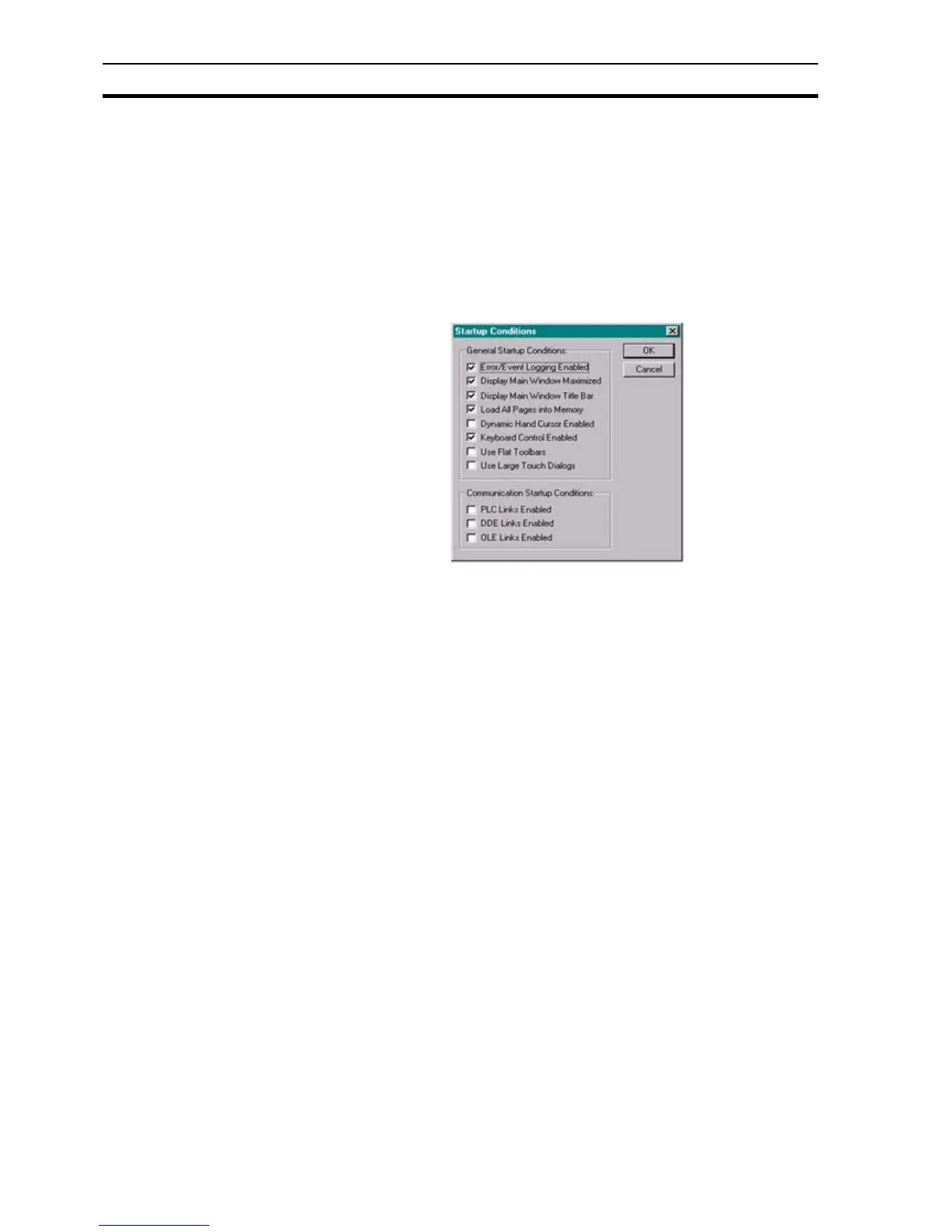Settings SECTION 6 Projects
90
6-10-2 Runtime Settings
The Runtime Settings option is selected from the Project menu.
The settings discussed in the following paragraphs help to configure runtime
environment applications and have no effect in the development environment.
Settings that affect the development environment are discussed in chapter 2,
Pages.
6-10-2-1 Startup Conditions
To open the Startup Conditions dialog box, select Startup Conditions from
the Runtime Settings menu.
Click the settings to enable/disable General Startup Conditions and
Communication Startup Conditions. Click the OK button to accept the
settings or the Cancel button to abort.
When Keyboard Control is enabled, a focus rectangle becomes visible around
the currently selected object. The cursor keys and <Tab> key can then be
used to navigate around the selectable objects on a page. When an object is
selected certain actions can then be applied, depending on the object's type.
The most common action is to simulate a left mouse button click.
The following list shows all the possible facilities with Keyboard Control
enabled.
• Moving Around Selectable Objects Using Cursor Keys. The cursor keys
can be used to move around the objects in the respective direction.
• With an object selected, if the right cursor key is pressed, then the closest
object is selected from within an area bounded by lines drawn diagonally
upwards and diagonally downwards (and to the right) from the centre of
the object. If no object is found then the current object remains selected.
A similar rule also applies when using the left cursor key, and the up and
down cursor keys.
• Moving Around Selectable Objects Using <Tab> Key. The <Tab> key can
be used to move around all the objects in the order in which they are
drawn (this can be varied using the 'raise object' and 'lower object' editing
facilities). The <Shift>+<Tab> key can be used to move around the objects
in the reverse order.
Note: Selectable items must have a left mouse button event defined or have a
default action.
